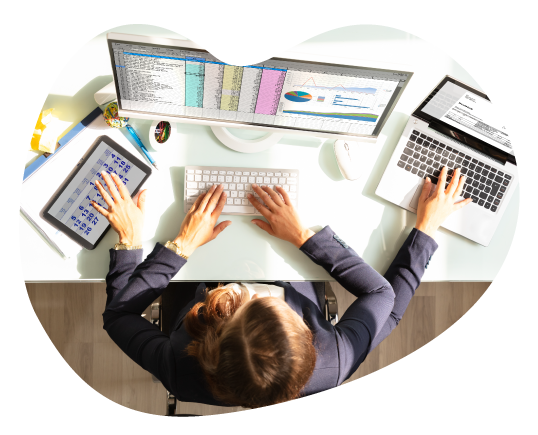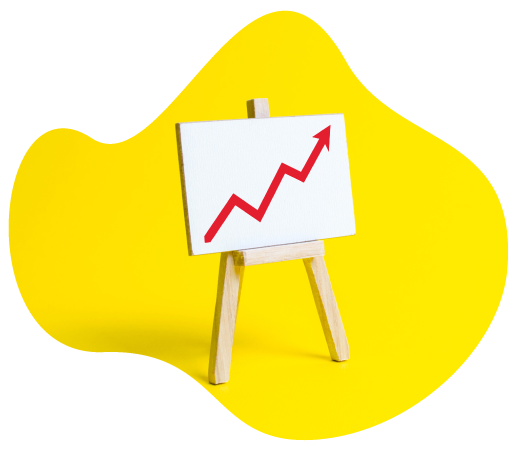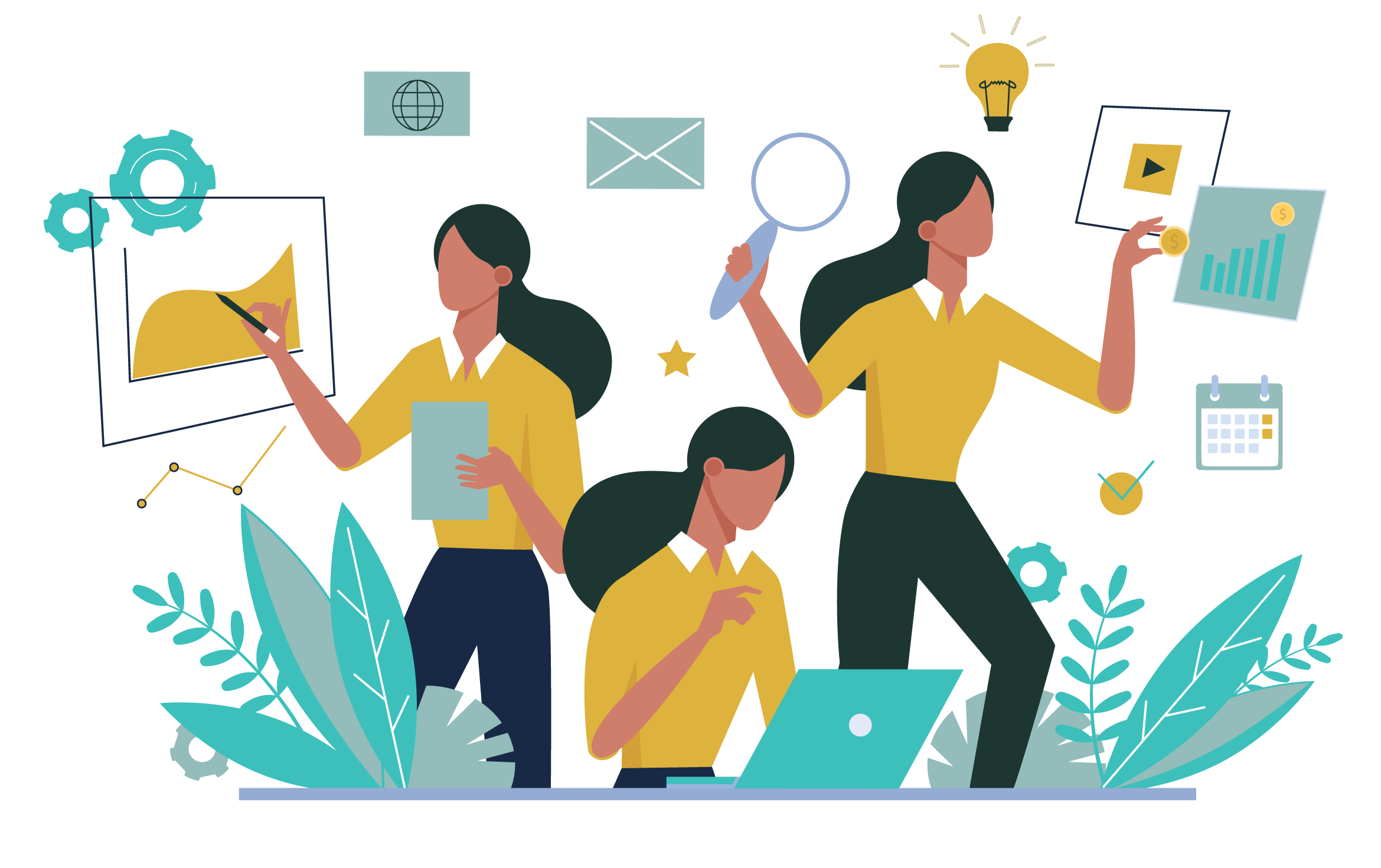POWERFUL TECHNIQUE:
Raise Your Productivity & Decrease Your Stress – Gain Traction Amid Endless Distractions
 By Grant Ian Gamble | May 12, 2020
By Grant Ian Gamble | May 12, 2020
Grant Ian Gamble is a business growth consultant, executive coach, author and keynote speaker. He works in a broad array of industries helping companies build teams, navigate change and drive growth.
Many of us are working from home for the first time and it’s amazing the distractions that occur throughout the day. Everything from those chores that nag at us through to kids needing help with their online studies. It can often feel like you’re trying to get a lot of things done and none of them seem to get completed as efficiently as you’d like. As we’ve personally watched our kids tackle online school, it’s been fascinating to witness the same thing happening with them.
Our kids are teenagers and they’re rarely detached from their smartphones. In fact, more often than not, they combine this attention distraction device with their laptop or a TV screen. They would argue that they’re absorbing the content while Snapping and chatting with friends simultaneously, but our observation over time is that they’re definitely paying a price for dividing their attention.

Even though “multimedia-ing” is the new norm, over time splitting your attention between multiple sources of stimulation, combined with the rapid change of pace that these formats provide, deteriorates your ability to carry out more sustained tasks.
Researchers have proven that comprehension decreases and switching between tasks comes with additional costs, including loss of speed (up to 40%), decreased efficiency (as much as 4x less efficient at completing tasks), and learning does not take place while you’re multitasking. Researchers have also proven conclusively that a higher incidence of errors occurs when we’re dividing our attention between two or more tasks.
As much as we might rail against the notion that we can’t do multiple tasks simultaneously, neuroscientists have made it abundantly clear that the brain cannot process multiple comprehension tasks simultaneously. Rather, the brain switches (just like an on and off button) between tasks. Even when we’re doing very ‘different’ tasks like driving and talking on the phone, performance is impaired significantly.
Beyond compromised performance, there are many other prices to pay for trying to do multiple tasks at once.
THE DOWNSIDES OF MULTITASKING
1. Negative impact on your short-term memory
Your brain’s “Scratchpad” is used to manage and focus on key information and when you’re multitasking and switching between tasks this short term information storage area becomes garbled and impacts your working memory.
2. Increased stress and anxiety
Neuroscientists say that multitasking causes you to lose focus and become more anxious. This in turn drains your physical and mental resources.
3. Inhibited creative thinking
When you lose focus and become stressed, you lose your ability to think creatively. You’re taking away the opportunity for your brain to digest or come up with new ideas.
4. Stops you from getting into the flow
Flow is a state where you’re absorbed by the task you’re focusing on. Time becomes irrelevant, stress levels decrease, and productivity increases exponentially.
5. More mistakes and less productivity
Even simple tasks take longer when you’re constantly switching from one activity to another. Mistakes occur and you get less of the things you need to do done.
The key is to accept the fundamental fact that the mind can only do one thing at a time.
And ditch the device when you’re trying to complete a task or be in the moment.
Certainly, this is easier said than done. Brain research indicates that our addiction to texts, Facebook, Instagram, SnapChat, Twitter, Google and email has a physiological cause–the body’s emission of the chemical dopamine (known as the “pleasure seeking molecule”). Our brain gets pleasure when we seek and find new information, so it chemically encourages this behavior (enter dopamine).
If you want to get tasks done at a higher quality level and in less time, it pays dividends to focus on one activity at a time. This is called Single Tasking and there are some real benefits to this concept.
THE UPSIDES TO SINGLE TASKING
1. Single tasking decreases stress levels
When you expend more energy trying to multitask, you end up exhausted and behind on work. When you focus on one thing at a time, you’re more likely to actually finish what you wanted to, and in turn lower stress levels.
2. Single-tasking helps you focus on what you have to do and not all the tempting distractions
Choosing something to focus your attention on for a set period of time means saying no to other distractions. This helps you focus on the important stuff you need to get done and will rebuild your ability to focus.
3. Creativity increases when you single-task
Single-tasking actually frees up brain resources to think more creatively. This helps with idea generation and coming up with solutions to problems.
So how do we change the habit of multi-tasking to a more productive and creative single-tasking process? Here are some tips:

TIPS FOR CHANGING THE HABIT OF MULTITASKING TO MORE PRODUCTIVE AND CREATIVE SINGLE TASKING
1. To break this constant stimulation from your devices, experts say turn off the audio and visual notifications built into your devices that alert you to the presence of more information. But mostly, just draw a line in the sand and commit to one thing at a time.
2. Another solution is to set a timer for 25 minutes and aim to work continuously for that time. Knowing that you only have to focus for that block of time will help to focus your mind. After 25 minutes, set a timer for a five or ten-minute break. Rinse and repeat. Just like building muscles you can build up the blocks of time and stay focused longer.
NOTE: When you take a break, grab a drink or a snack, get some fresh air and stretch, check your SnapChat or whatever it is you follow or like, but don’t get bogged down in another task – this is meant to be a break where your mind can wander. When your break timer goes off then come back to the task you were working on before. These breaks are important, because mental performance drops if you don’t take breaks. Decision making slows, attention levels drop, and creativity decreases.
We actually did this exercise with our 15-year-old son and his ability to complete assignments and finish work that he’d been struggling to complete went through the roof. In fact, he started completing a day’s work in just two or three single-tasking blocks of 25 minutes each.
3. One other solution is changing brain states through mindfulness meditation. This can reduce dependence on various forms of multitasking and help improve focus.
Research has shown how mindfulness meditation improves brain function within 1 ½ to 2 months of practice
A simple breath meditation can be done anytime and anywhere. This is especially helpful if you’re stressed or frustrated. Here’s the basics:
- Take one DEEP breath in.
- One SLOW breath out.
Start with 10 breaths to start with. The longer breath out induces the parasympathetic nervous system. This means you’re changing from a stressed state to a more relaxed and composed state. Use this whenever you feel yourself becoming overwhelmed.

Getting focused and productive is much like fitness. You can build your performance and endurance over time. It is critical to reward yourself as you progress and not feel like the ultimate achievement is 100% productivity. Getting to a point where you can complete projects and tasks with a minimum of distractions is a powerful achievement. Remember that the rest-breaks and distractions we mindfully engage in will actually improve your productivity over time.
The real benefit is that being present and engaged in one activity at a time will enhance your memory, decrease your stress levels, enhance your creativity and improve your efficiency and productivity.
It’s amazing what you can achieve when you can consciously focus your attention. The rewards are enormous.

Fill out the form below and receive a PDF download of "6 Key Strategies to Engage Untapped Fitness and Wellness Market Segments"
Please check your email for a link to your PDF download of "6 Key Strategies to Engage Untapped Fitness and Wellness Market Segments." Don't forget to check your Spam or Promotions folder and add Grant Ian Gamble to your email contacts.
Let's Connect!
CUSTOMER EXPERIENCE, TEAM ENGAGEMENT & WORKPLACE WELL-BEING: AFFINITY OS™ | WELLNESS INTEGRATION | MINDFUL LEADERSHIP: "THE AFFINITY PRINCIPLE"
0475 866 592

The Affinity Principle™ by Grant Gamble presents a formula for business success through a people-centric, mindful leadership approach.
PEOPLE FIRST, ALWAYS.

